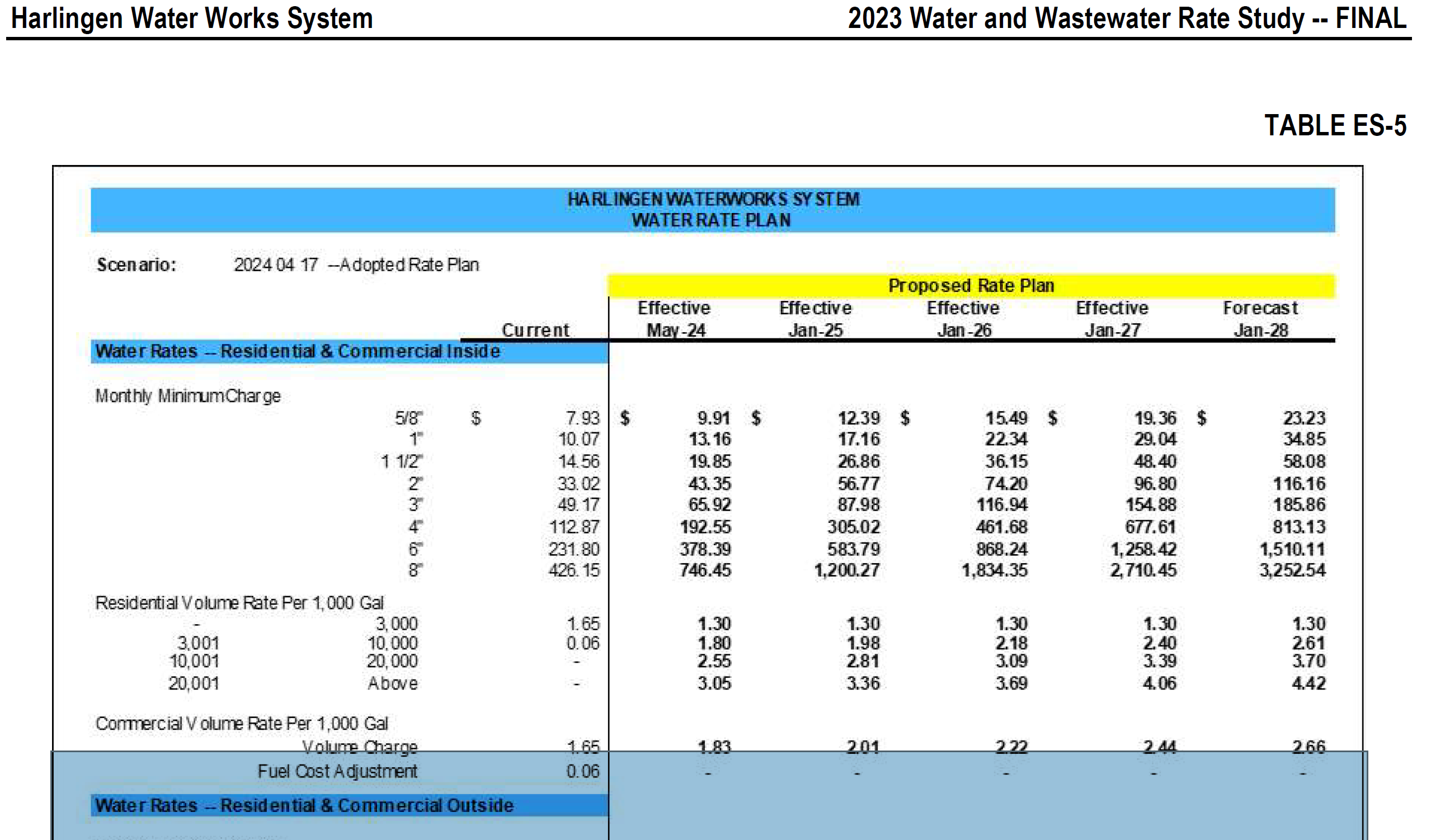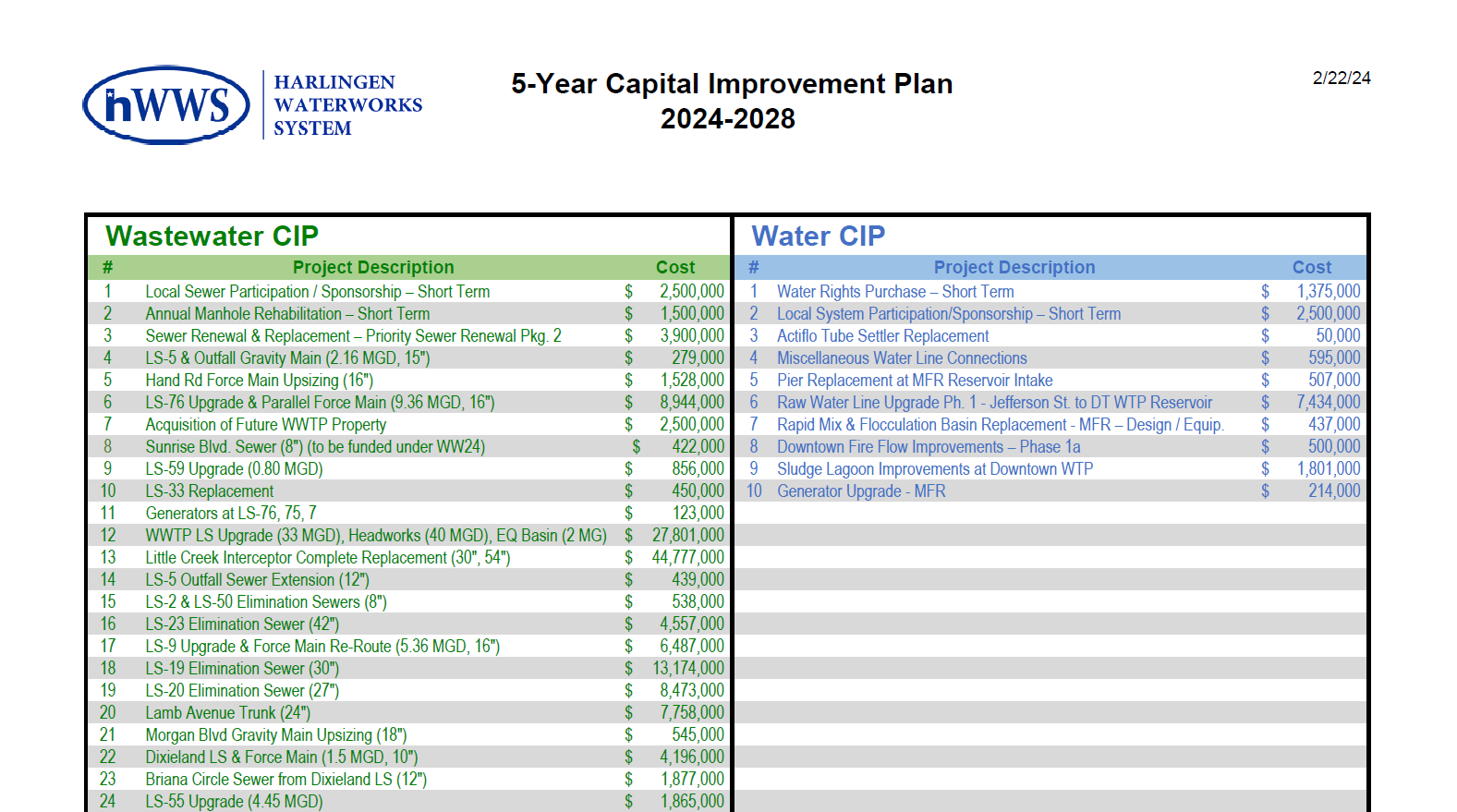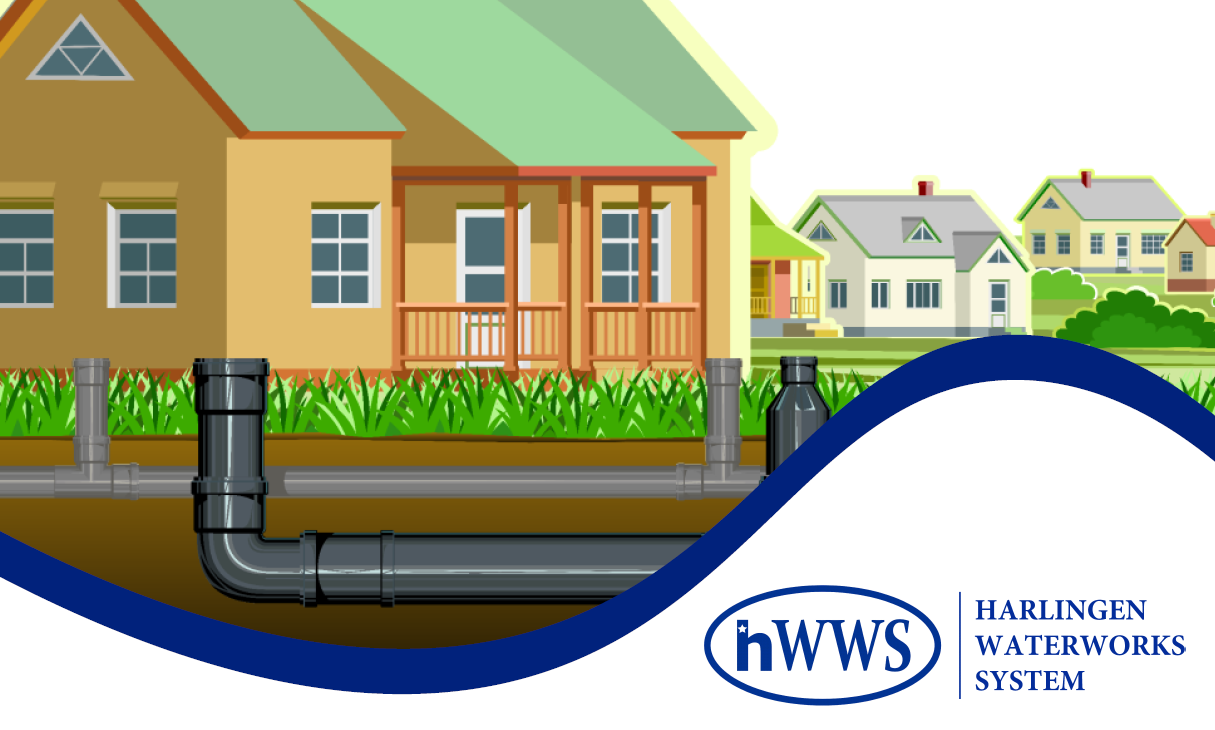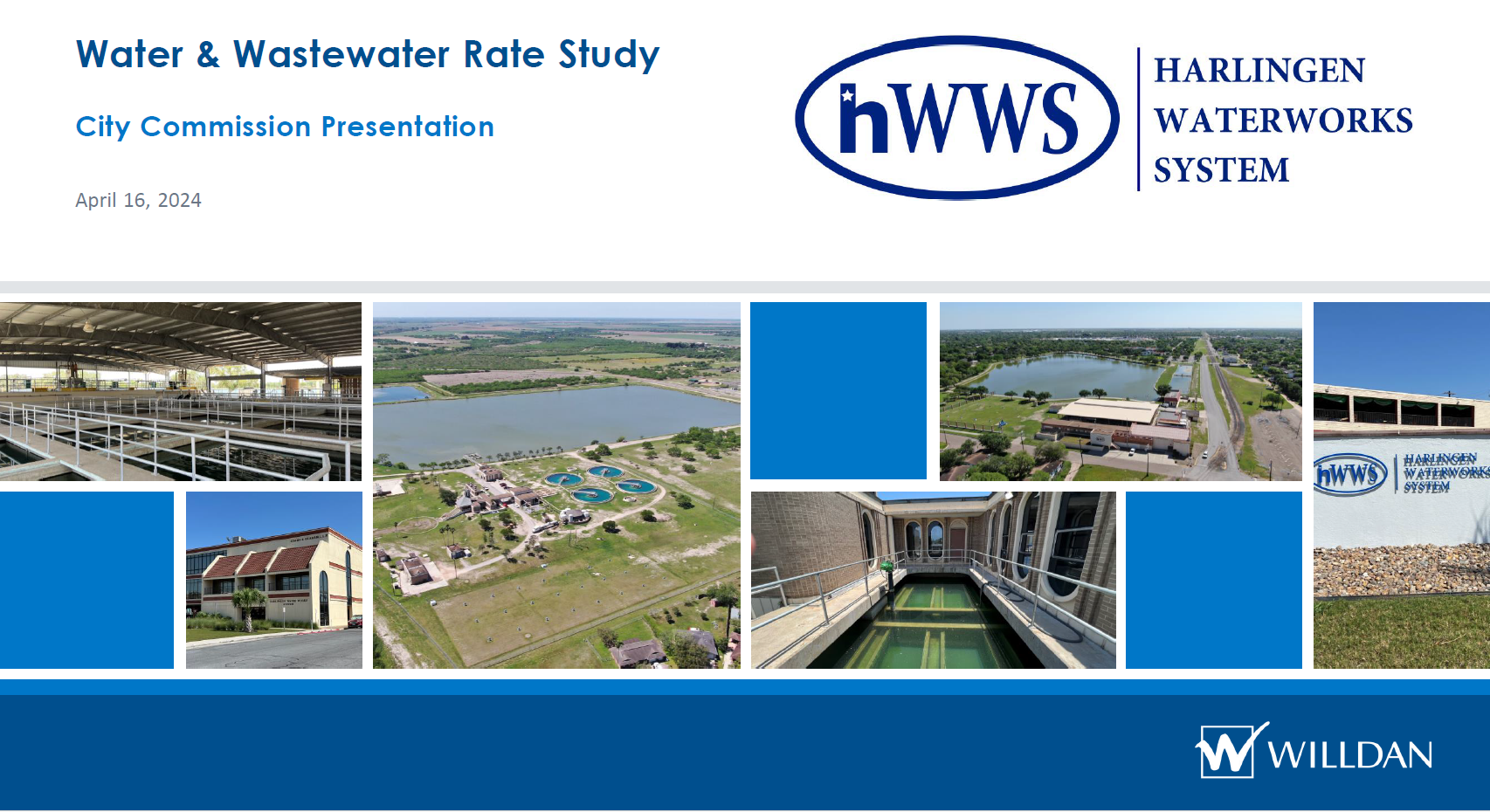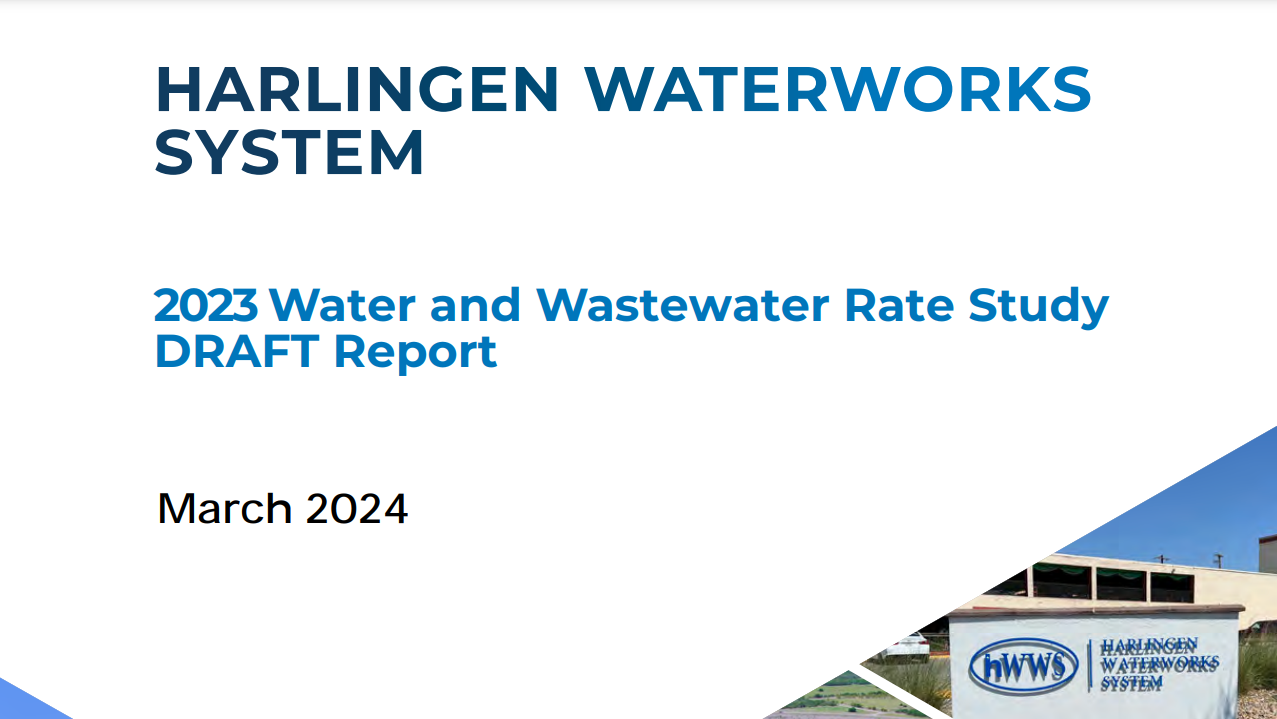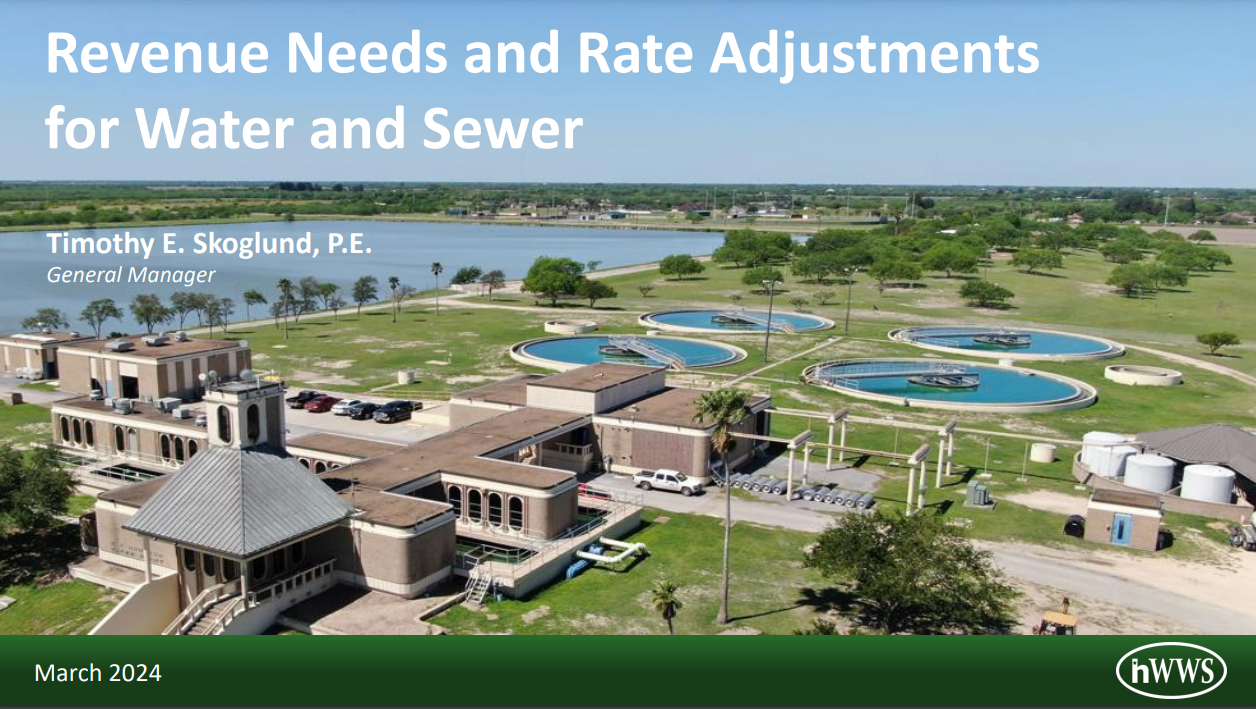2024 Rate Increase
On April 17, the proposed rate increase was adopted by the City of Harlingen.
Background
Harlingen Waterworks System (HWWS) provides water and sewer for approximately 26,000 customers. Harlingen’s water and sewer system dates back to the early 1900s and consists of over 800 miles of pipe.
The sewer system is severely overloaded and experiences sewer overflows during heavy rainstorms. HWWS is also contending with failing infrastructure that has deteriorated because of age and exposure to harsh operating conditions, resulting in:
- Cracked clay sewer pipes that are responsible for roughly 600 sewer backups annually
- Leaking / unstable manholes
- Corroded lift stations
- Brittle asbestos cement pipe prone to frequent water main breaks
As a result, HWWS plans to replace and upgrade the main sewer interceptor and trunk pipelines, rehabilitate or replace failing manholes and lift stations, and replace broken, failing pipes, treatment plant equipment, and meters.
About the Rate Study
HWWS’s revenue is generated from customer water and wastewater rates. Because the cost for critical upgrades and replacements exceeded the revenue collected through current rates, HWWS underwent a rate study to determine revenue needs and the necessary rate adjustments.
HWWS retained a professional consultant, Willdan Financial Services, to analyze projected revenues and costs and to prepare the proposed rate plan. The consultant recommended a rate plan with guidance from Harlingen’s officials to cover operating cost increases and construct necessary improvement projects to ensure HWWS can provide reliable, safe drinking water and sewer services.
With the rate adoption, customers will immediately see a portion of the increased rate on their bill. The entire rate increase will be phased in over five years. HWWS will continue to pursue other ways to raise revenue to minimize the burden on ratepayers. Other potential sources include grants and low-interest loans through the Texas Water Development Board, FEMA, American Rescue Plan Act (ARPA), and Federal Community Project Funding, programs.
Resources
FAQs
The five-year rate plan was formally adopted by ordinance of the City Commission on April 17, 2024.
The rate plan will be phased in over the next five years starting in May 2024. Our rates webpage at hwws.com/rates contains information on the proposed rate plan. Look for the “Rate Plan Presentation” under the Resources section for details on the new rates.
HWWS is funded primarily through monthly water and sewer charges.
By City Charter, sales taxes and property taxes collected by the City cannot be used to pay for water and sewer costs. This rule was approved by vote of the residents of Harlingen many decades ago to ensure accountability and proper use of funds. It is not uncommon in other communities for taxes to be used to pay water and sewer expenses or for water and sewer revenues from rates to pay for costs unrelated to water and sewer services.
Your bill pays for the upkeep of HWWS’s water and sewer operations and infrastructure.
HWWS’s rates pay only for the operation and improvement of the water and sanitary sewer systems and cannot be used to pay for drainage improvements.
HWWS gets its water from the Rio Grande River and uses disinfection and purification treatment systems to make the water safe for consumption and use by the community.
Current rates are insufficient to cover overall costs, necessitating a rate increase to improve vital services, resolve capacity deficiencies, and renew aging infrastructure.
HWWS conducted a rate study with the help of a financial consultant to understand how much of a rate increase is needed to cover increasing operating costs and make essential capital improvements to the water and sewer systems. The former rates would not have generated enough revenue to cover operating costs, much less the critical infrastructure improvements necessary to continue providing reliable, safe water and sewer service.
We required that our rate consultant follow the rate setting principles established by the AWWA to determine the cost of providing service to each customer class and to ensure the rate plan fairly allocates those costs to each customer class. Using this approach, we have ensured that costs are fairly allocated and that one customer is not subsidizing another customer’s water and sewer bill.
The proposed rates were determined by the funds needed to upgrade, repair and operate the current water and wastewater systems.
Over the last few years, HWWS has funded the operating costs necessary to provide service and has invested in its water and sewer infrastructure to the limited extent that rates have allowed. Major, recently completed projects totaling $10.3 million in construction cost involved replacement of break-prone asbestos cement water mains in the Treasure Hills and Pendleton Place neighborhoods, and replacement of failing segments of clay sewer mains at 17 locations throughout the City.
HWWS continuously looks for sources of funding outside of rates charged to customers to help fund the improvement of our infrastructure. HWWS has and will continue to apply for government grants and loans to minimize the funds that must otherwise be generated through rates.
Most federal and state funds for water and sewer projects are administered by the Texas Water Development Board (TWDB), but occasionally there are other funding opportunities offered through FEMA, the Bureau of Reclamation, and community earmarks through our congressional representatives.
We’ve communicated information about the rate study at 12 public meetings over the last five (5) months. Five (5) joint meetings have been held between the City Commission and Utility Board of Trustees including one meeting each in November, December, January, and two in February. Additionally, HWWS has given lengthy presentations at the town hall meetings held in each of the five (5) districts in January and February. The City Commission discussed rate topics at each of the four City Commission meetings held in March and April. All meetings have been posted, and all the town hall meetings have been widely publicized.
We launched a webpage( hwws.com/rates) on our website where customers can view presentations on the need for additional revenue, the final rate plan presentation, and the 125-page rate study report. We have been posting on Facebook and have launched X and Instagram accounts to increase our community engagement. Customers who visit customer service at our Main Office receive a flyer in English and Spanish.
For many years, Harlingen’s water and sewer service rates have been among the lowest of any water utility in the Rio Grande Valley. Our payment policies and deadlines are similar to many other water utilities in our area.
We have also partnered with Community Action Corporation of South Texas (CACOST) to administer assistance provided through a federal program that helps eligible customers avoid disconnection for non-payment. Since 2022, this program has provided over $100,000 in assistance to our customers experiencing financial hardship and are at risk for disconnection because of non-payment. To learn more, please call Harlingen Waterworks’ customer service at 430-6100.
From 2007 to 2017, our capital improvement plans focused on upgrading our wastewater plant water treatment plants. Our focus then turned to our conveyance infrastructure – the water mains, sewer pipes, and pumps that move that move potable water to our customers and return wastewater to the wastewater plant.
Since 2017, we prioritized daily operations and built over $32 million of infrastructure improvements while also undertaking an in-depth evaluation of the water and sewer capacity needs. In 2022, we completed detailed master plan defining capital improvement projects needed over a 20-year planning period
Nearly half of the rate increase is attributable to the extraordinarily high inflation that has doubled construction prices between 2020 and 2024.
Our leaders are concerned about the affordability of the new rates for economically disadvantaged customers who are least able to afford an increase. Harlingen Housing Authority closely examines the financial situation of their clients and offers subsidized housing to those in need. The City Commission desired to extend a lifeline discount to help roughly 1,000 Housing Authority customers to come off assistance and onto better financial footing.
Under the proposed rate plan, car washes will pay the full cost of their water and sewer service, not other ratepayers. The rate study followed the rate setting principles of the American Water Works Association to ensure the cost of serving one customer class is billed to those customers and are not subsidized by other customers. Additionally, many people don’t know that car wash businesses typically recycle about 75% of the water they use.
The 5-year capital improvement plan delivers significant improvements in every district of the City. The plan consists of projects to solve capacity deficiencies and to rehabilitate failing infrastructure, ensuring that water and sewer service can be sustained well into the future.
Customers upstream or at a higher elevation than the areas experiencing sewer overflows may not have noticed a problem in their neighborhood, but in most of those cases, their wastewater flows downstream to the problem areas.
As Harlingen continues to grow, capacity upgrades are needed to prevent water and sewer services from deteriorating.
HWWS’s 5-year capital improvement plan and project maps can be viewed on our rates webpage at hwws.com/rates. Look under the Resources section where you can find the PDF file titled “5-Year Capital Improvement Plan”.
A $5 increase on every bill will only generate a fraction of the revenue needed to pay for rising operating expense and essential capital improvements. The revenue shortfall that a $5 increase would generate would require HWWS to abandon most of the vital capital improvements necessary to solve existing problems and would compromise HWWS’s ability to provide safe reliable water and sewer service.
The proposed rate increases are necessary to pay for 1) operating expense increases and 2) the cost of capital improvements. A lower increase would not provide enough revenue to cover operating cost inflation and the essential projects on the 5-year CIP.
The infrastructure problems we have today are the result of insufficient investment in preceding decades.
State law requires municipal entities like HWWS to competitively bid construction contracts and award to the lowest responsive, responsible bidder.
The capital improvement plan and project maps have been posted to hwws.com/rates. The projects shown on the maps are by priority number shown on the capital improvement plan project list. The maps also include Harlingen’s district boundaries.
Every customer’s bill depends on three factors:
- Meter size – this establishes the base charges for water and sewer
- Water use – this determines the volumetric charges for water and sewer
- Winter average water use – average of water use from December, January, and February meter readings sets the sewer volume cap
Water volumetric charges bill be billed according to how much water is used in each of the four (4) rate blocks.
- 0 to 3,000 gallons are billed at the first block rate
- 3,001 to 10,000 gallons are billed at the second block rate
- 10,001 to 20,000 gallons are billed at the third block rate
- 20,001 gallons and above are billed at the fourth block rate
Sewer volumetric charges are billed at the lowest of actual water use or your winter average. If you use less than the winter average, you will be billed only for what you actually use. There is only one sewer rate (no blocks as for water). The new rates can be found in the Rate Plan Presentation published under Resources section of our rates webpage at hwws.com/rates.
Formerly, and under the new rates, apartments and duplexes that have only one meter are considered commercial and will be billed at the commercial rate. Block rates apply only to single-family residential units that are served by a dedicated meter. The commercial water rate will increase, but not as much as the higher use block rates (i.e. usage greater than 10,000 gallons) for single-family residential customers.
Most multi-family accounts effectively pay a lower overall water and sewer bill than individually metered residences because the master-metered base charges are significantly lower on a per-unit basis.
HWWS engaged a financial consultant to perform the detailed calculations of the rate study subject to the requirement that the rate setting principles of the American Water Works Association be followed in determining costs of service among the various customer classes and in establishing rates that charge the customer classes in proportion to their cost of service. This approach is the industry standard available to achieve equitable distribution of costs.
The Rate Study Report is available for review at hwws.com/rates.
The proposed block rate structure for water billing provides one of the most effective ways to avoid a disproportionate impact on customers of lower socioeconomic status. Such customers generally consume less water, and a greater fraction of their use falls in the lowest block rate which will be $0.41 per thousand gallons less than the current rate starting in May 2024.
The new rate plan will discount water and sewer charges by $25 per month for approximately 1,000 customers who live in housing provided by Harlingen Housing Authority or live in housing subsidized by the Authority.
Preceding implementation of the new rates in May 2024, Harlingen’s fixed revenues generated from base charges were only 34% of the total bill for 5,000 gallons of consumption. The median fixed revenue from base charges at that same consumption level for other RGV cities is 69%. In years with higher rainfall, consumption drops with an accompanying decrease in revenues that can jeopardize HWWS’s ability to pay its necessary expenses.
The proposed rate plan has been designed to increase fixed revenues through higher base charges – for 5,000 gallons of consumption, base charges will be approximately 50% of the total bill. This change will appreciably improve revenue stability but will still be less than the fraction of fixed revenue collected by most water utilities in our region.
The critical need to construct many costly infrastructure projects together with recent, steep construction cost inflation now require significant increases in revenue to fund projects that are essential to HWWS’s ability to continue providing safe, reliable water and sewer service. Any reduction of rates would have to be met with reduction of capital project spending and a degrading of the level of services that HWWS will be able to provide.
Detailed explanations of the methodologies using for the rate study can be found in the draft Rate Study Report on hwws.com/rates.
In 2022 following the completion of the Master Plan, HWWS submitted over $100 million in applications to the Texas Water Development Board (TWDB) for financial assistance available in the form of low-interest loans and grants. TWDB has committed $10 million in low interest loans to date and is anticipated to offer a $9 million grant with a $9 million loan to help finance projects on the 5-year capital improvement plan.
Over the last seven years, HWWS has intentionally limited the addition of new positions to a rate below the rate of growth of our customer base.
Additional information on rates, the details of the adopted rate plan, the Rate Study Report, and information on the benefits of the capital improvement plan within each Harlingen district will be made available on hwws.com/rates.
In addition to Facebook, HWWS will post updates on our recently launched Instagram and X accounts to keep customers informed about the rate increases as the new rates are phased in over five years.




